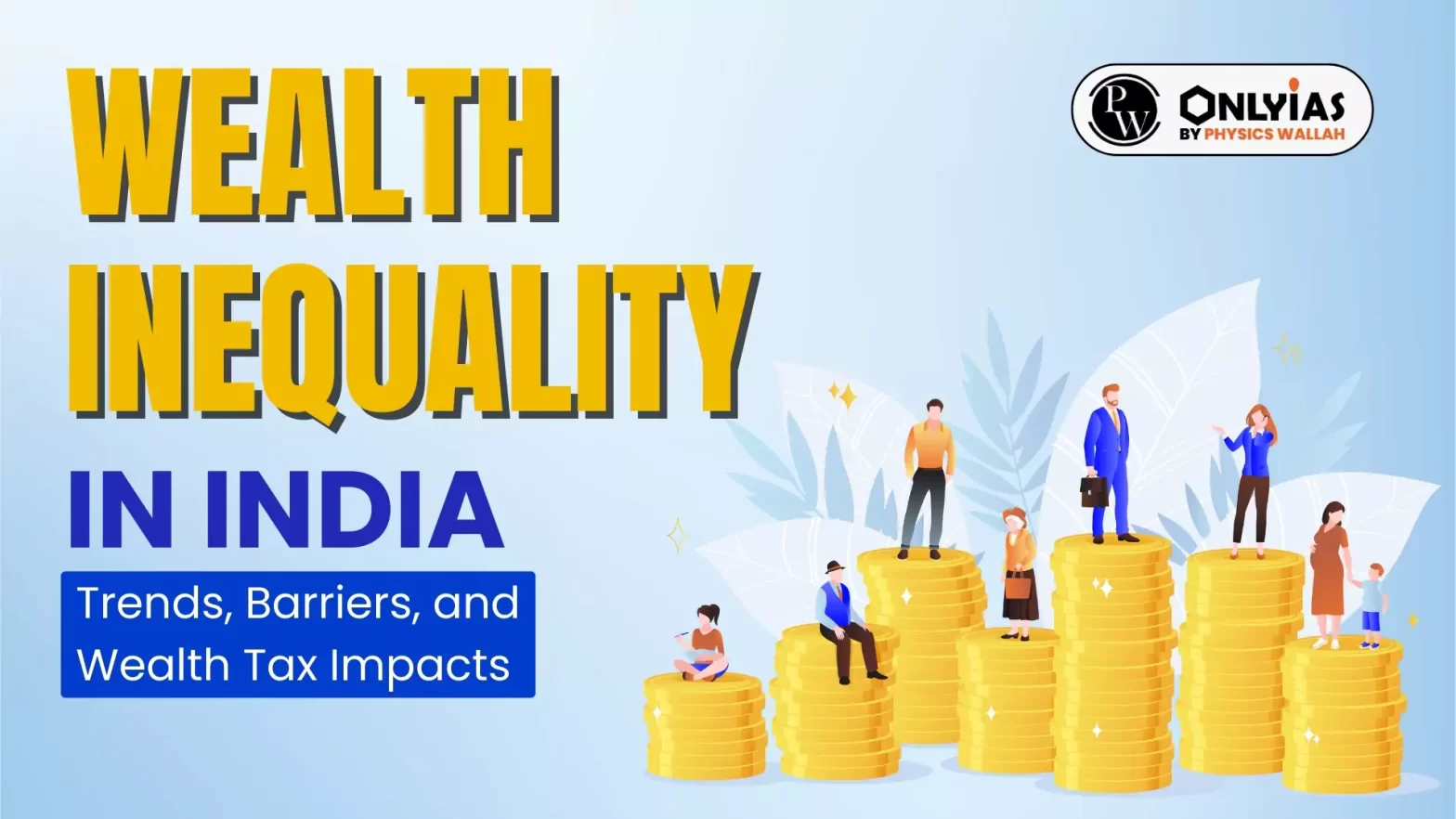Context
Recently, French economist Thomas Piketty, along with a few other economists, came out with some startling findings on economic inequality trends in India over the last century.
Overview of Income and Wealth Inequality in India
- Wealth and Income Inequality Statistics 2022: In 2022, the top 1% owned 40.1% of total wealth and earned 22.6% of total income, while the bottom 50% owned only 6.4% of wealth and earned 15% of income.
- Wealth and Income Disparity Analysis: The fate of the bottom 50% looks even worse when compared with the top 10% who owned 65% of total wealth and earned 57.7% of total national income.
- Addressing Inequality: Such disparity prompts calls for a wealth tax on the rich to address regressive tax policies.
Enroll now for UPSC Online Course
Economic Growth and Inequality Trends in India
- Inequality Surge: Inequality surged since the 1980s with the adoption of market policies, contrasting with stagnant growth during socialist decades.
- For example, the share of the bottom 50% in total national income dropped from 23.6% in 1982 to 15% in 2022, while the income share of the top 10% rose from 30.1% to 57.7% during the period.
- Stagnant Economic Growth in India: Economic growth in India was stagnant in the socialist decades, and began to rise only after 1990.
- India’s Growth Shift: Piketty and others note that India’s economy grew at a miserable 1.6% per year between 1960 and 1990, but at a much stronger 3.6% per year between 1990 and 2022.
- Increase in Real incomes: Despite the bottom 50% losing share of national income (from 23.6% to 15% since 1982), their real income increased over four-fold between 1991 and 2022.
- The size of India’s total economic pie has grown so much in the last 30 years that the bottom 50% now enjoys higher real income despite receiving a much lower share of national income.
- Income Share Trends: The trend in income shares of different groups since the 1980s shows that the bottom 50% does not enjoy as much economic freedom as the top 1% or even the top 10%.
- Income Disparity in India: Piketty estimates that the top 1% income earners in India earn ₹53 lakh on average annually while the bottom 50% earners earn just ₹71,000.
Barriers to Economic Mobility
- Disparity in a Free Market: In a free market economy, such stark differences in income levels would present lucrative arbitrage opportunities and help close the gap between the richest and the poorest.
- For example, seeing that neurosurgeons in India earn several millions of rupees each year, more people from lower income groups would try to become neurosurgeons.
- Facilitating Upward Mobility: Liberalizing sectors like finance and education could facilitate upward mobility by enabling investment in high-paying skills.
- Labor Mobility and Supply Constraints: A hefty tax on neurosurgeons to redistribute income, on the other hand, will only impede the movement of labor towards high-paying jobs and even shrink the current supply of neurosurgeons.
- Property Rights and Income Mobility: Bottom 50% enjoy very little protection of their property rights, which makes it hard for them to even make a living, let alone to climb up the income ladder.
Inevitability of Wealth Inequality in India
- Wealth Disparity in India: India’s top 1%, on average, possesses a net wealth worth ₹5.4 crore while people in the bottom 50% are worth just ₹1.7 lakh.
- Market Economy Dynamics: Wealth inequality is inevitable in a market economy as the market rewards people who are better at investing or allocating capital.
- Government Bias: India’s extreme wealth gap is exacerbated by government favoritism toward the top 1%, hindering competition and exacerbating disparities.
Impact of Wealth Tax
- Capital Investment Reduction: Investors can actually shield themselves from higher taxes (including wealth tax) by lowering the amount of capital they invest in any venture based on their expected post-tax income.
- Impact on Worker Income and Output: People who would really be affected by higher taxes on the wealthy would then be workers and landowners who will be paid lesser in order to maintain investor returns.
- The tax would thus indirectly affect the income of ordinary workers, most of whom belong to the bottom 50% or the middle 40% of the population, and hence also affect their output.
- Wealth Tax Limitation: Additionally, most of the top 1% ‘s wealth is in capital assets, not consumer goods, so taxing them wouldn’t directly address low living standards.
Way Forward
- Eliminating Special Privileges: So, the way forward then is to get rid of such special privileges and allow more competition in the economy.
- Encouraging Competition: This would naturally reduce the wealth share of the top 1% and also benefit the wider economy since competition ensures that the best investors rise to the top of the wealth hierarchy and enlarge the size of the economic pie in the process.
- Empowering the Poor: Instead, offering greater economic freedom to the poor would enable them to compete better in the market and claim a larger share of the economic pie.
Enroll now for UPSC Online Classes
Conclusion
Addressing barriers to economic mobility and fostering competition could offer more sustainable solutions to reduce inequality and improve living standards for all.
Also Read: Indian Economy Projected To Grow 6.5% In 2024

